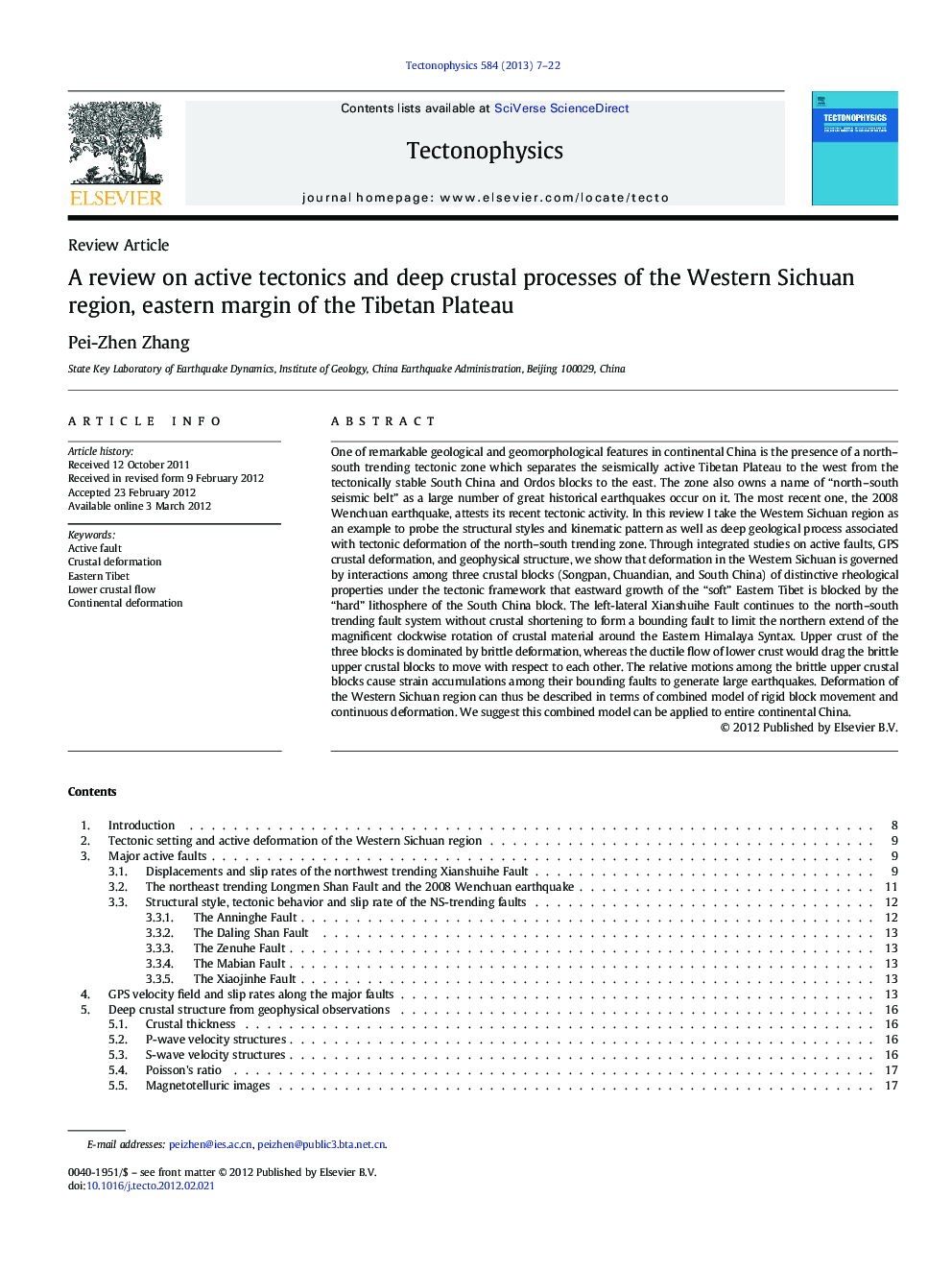| کد مقاله | کد نشریه | سال انتشار | مقاله انگلیسی | نسخه تمام متن |
|---|---|---|---|---|
| 4692431 | 1636801 | 2013 | 16 صفحه PDF | دانلود رایگان |
One of remarkable geological and geomorphological features in continental China is the presence of a north–south trending tectonic zone which separates the seismically active Tibetan Plateau to the west from the tectonically stable South China and Ordos blocks to the east. The zone also owns a name of “north–south seismic belt” as a large number of great historical earthquakes occur on it. The most recent one, the 2008 Wenchuan earthquake, attests its recent tectonic activity. In this review I take the Western Sichuan region as an example to probe the structural styles and kinematic pattern as well as deep geological process associated with tectonic deformation of the north–south trending zone. Through integrated studies on active faults, GPS crustal deformation, and geophysical structure, we show that deformation in the Western Sichuan is governed by interactions among three crustal blocks (Songpan, Chuandian, and South China) of distinctive rheological properties under the tectonic framework that eastward growth of the “soft” Eastern Tibet is blocked by the “hard” lithosphere of the South China block. The left-lateral Xianshuihe Fault continues to the north–south trending fault system without crustal shortening to form a bounding fault to limit the northern extend of the magnificent clockwise rotation of crustal material around the Eastern Himalaya Syntax. Upper crust of the three blocks is dominated by brittle deformation, whereas the ductile flow of lower crust would drag the brittle upper crustal blocks to move with respect to each other. The relative motions among the brittle upper crustal blocks cause strain accumulations among their bounding faults to generate large earthquakes. Deformation of the Western Sichuan region can thus be described in terms of combined model of rigid block movement and continuous deformation. We suggest this combined model can be applied to entire continental China.
► Deformation is governed by interactions among three crustal blocks of distinctive rheological properties.
► Left-lateral strike-slip faults play major role of tectonic deformation.
► Ductile flow of lower crust drags the brittle upper crustal blocks to move and rotate with respect to each other.
► Present-day tectonics can be described by a combined model of rigid block movement and continuous deformation.
Journal: Tectonophysics - Volume 584, 22 January 2013, Pages 7–22
